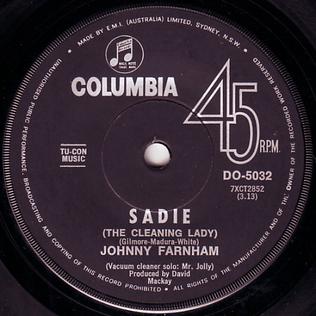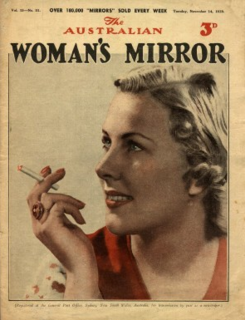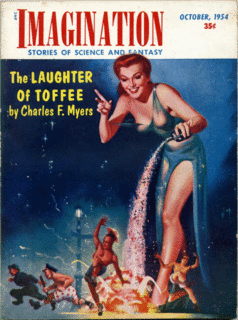Cheryl Lau "Samantha" Sang is an Australian singer from Melbourne who had an earlier career as Cheryl Gray. She had a number eight hit in Australia with "You Made Me What I Am" in 1967. By 1969, she had relocated to the United Kingdom, where she worked with the Bee Gees before returning to Australia in 1975. Sang reconnected with the Bee Gees in 1977 and had a number three hit with their song "Emotion" on the Billboard Hot 100 in 1978, which also peaked at number two in Australia and at number eleven in the United Kingdom. The related album, Emotion, reached the top 30 on Billboard 200 and included two other Hot 100 singles.
Rock music in Australia, also known as Oz rock, Australian rock and Aussie rock, is rock music from Australia. The nation has a rich history of rock music and an appreciation of the roots of various rock genres, usually originating in the United States or Britain, but also continental Europe, and more recently the musical styles of Africa. Australian rock has also contributed to the development of some of these genres, as well as having its own unique Australiana sound with pub rock and its indigenous music.

TV Week is a weekly Australian magazine that provides television program listings information and highlights, as well as television-related news.
Robert Clyde Packer, usually known as Clyde Packer, was the son of Australian newspaper magnate Frank Packer and the elder brother of media baron Kerry Packer. From 23 April 1964 to 22 April 1976 he was a Member of the New South Wales Legislative Council for the Liberal Party. Packer was originally intended to be his father's heir before a falling-out in 1972 resulted in Kerry inheriting the family business in 1974 upon Frank's death.
Go-Set was the first Australian pop music newspaper, published weekly from 2 February 1966 to 24 August 1974, and was founded in Melbourne by Phillip Frazer, Peter Raphael and Tony Schauble. Widely described as a pop music "bible", it became an influential publication, introduced the first national pop record charts and featured many notable contributors including fashion designer Prue Acton, journalist Lily Brett, rock writer / band manager Vince Lovegrove, music commentator Ian Meldrum, rock writer / music historian Ed Nimmervoll and radio DJ Stan Rofe. It spawned the original Australian edition of Rolling Stone magazine in late 1972.
Lily Brett is an Australian novelist, essayist and poet. She lived in North Carlton, Melbourne from 1948 to 1989 and then in New York City. In Australia she had an early career as a pop music journalist, including writing for teen magazine Go-Set from May 1966 to September 1968. From 1979 she started writing poems, prose fiction and non-fiction. As a daughter of Holocaust survivors, her works include depictions of family life including living in Melbourne and New York. Four of her fictional novels are Things Could Be Worse (1990), Just Like That (1994), Too Many Men (2001) and You Gotta Have Balls (2005).
The Go!! Show was an Australian popular music television series which aired on ATV-10 Melbourne from August 1964 to August 1967. It was produced by DYT Productions at the Channel 10 studios in Nunawading, Victoria. Over its run it was hosted, in turn, by Alan Field (1964), Ian Turpie (1964–66) and Johnny Young (1966–67).
Mississippi were an Australian soft rock band (1972–1975), which included Graham Goble on lead vocals and guitar, Beeb Birtles on lead vocals and guitar, and Derek Pellicci on drums. The band had started as Allison Gros in Adelaide in 1970 and moved to Melbourne in 1971 where they recorded as Allison Gros, Drummond and, early in 1972, became Mississippi. As Drummond they issued a cover version of "Daddy Cool", which peaked at No. 1 on the Go-Set National Top 40 for eight weeks. As Mississippi they reached No. 10 with "Kings of the World". In early 1975, with Birtles, Goble and Pellici aboard and the addition of Glenn Shorrock, the group were renamed, Little River Band.

"Sadie " was Australian pop singer Johnny Farnham's first solo single. The novelty song was released in November 1967 and was No. 1 on the Go-Set National Singles Charts for five weeks in early 1968. It was the largest selling single in Australia by an Australian artist in the 1960s. The single, "Sadie" sold approximately 180,000 copies in Australia, and was also released in New Zealand, Denmark and Germany. The B-side, "In My Room" was written by Farnham. The A-side's label includes the acknowledgement "Vacuum cleaner solo: Mr. Jolly".
The Deakins were an Australian rock group which formed in 1963. This was the era of the local version of beat music; which included 1960s garage rock, proto-punk and pop. Their initial line-up included, Jeff W Donoghue on bass guitar, Ian Kinkead on drums, Bob Millar and Gary Schober on guitars. The later, Deakins 'trio' released two singles in 1966, "Tonight You're Gonna Fall in Love with Me" and "Take Me for a Little While", via GO!!. The band regularly appeared on the related TV pop music weekly series, The Go!! Show, and on daily weekday show, Kommotion, both broadcast by ATV-0. The Deakins disbanded in 1973.
Lynne Randell was an English Australian pop singer. For three years in the mid-1960s she was Australia's most popular female performer and had hits with "Heart" and "Goin' Out of My Head" in 1966, and "Ciao Baby" in 1967. In 1967, Randell toured the United States with The Monkees and performed on-stage with support act Jimi Hendrix. She wrote for teen magazine, Go-Set, and television programme guide, TV Week. While on the US tour, Randell became addicted to methamphetamine, an addiction which she battled for most of her life.
Rolling Stone Australia was the Australian edition of the United States' Rolling Stone magazine devoted to music, politics, and popular culture, published monthly. The Australian version of Rolling Stone was initially published in 1970 as a supplement in Revolution magazine published by Monash University student Phillip Frazer. It was launched as a fully fledged magazine in 1972 by Frazer and was the longest surviving international edition of Rolling Stone until its last issue appeared in January 2018.
The Groop were an Australian folk, R&B and rock band formed in 1964 in Melbourne, Victoria and had their greatest chart success with their second line-up of Max Ross on bass, Richard Wright on drums and vocals, Don Mudie on lead guitar, Brian Cadd on keyboards and vocals, and Ronnie Charles on vocals. The Wesley Trio formed early in 1964 with Ross, Wright and Peter McKeddie on vocals; they were renamed The Groop at the end of the year.
The Australian 1970 Radio Ban or 1970 Record Ban was a "pay for play" dispute in the local music industry that lasted from May until October. During this period, a simmering disagreement between commercial radio stations – represented by Federation of Australian Radio Broadcasters (FARB) – and the six largest record labels – represented by Australasian Performing Right Association (APRA) – resulted in major United Kingdom and Australian pop songs being refused airplay. The government-owned Australian Broadcasting Corporation – which had its own copyright and royalty arrangement with recording and music publishing companies – did not take part in the dispute. The ban did not extend to releases by American artists. Some radio disc jockeys, such as Stan Rofe, defied the ban by playing songs according to their personal tastes.
Kommotion was a popular Australian "Top 40" pop music TV show of the mid-1960s, which premiered in December 1964. The program was hosted by popular disc jockey Ken Sparkes, who was one of the main presenters at Melbourne pop radio station 3UZ. In 1965, after the end of his previous series, Teen Scene, pop singer Johnny Chester became the associate producer of the program.
By far the most influential and popular music-related publication of the sixties was the weekly magazine Go-Set, which was published from 1966 to 1974. Founded in Melbourne in 1966 by a group of former Monash University students including Philip Frazer, Tony Schauble and Doug Panther, Go-Set chronicled all of the major events, trends, fads and performers in Australian popular music, as well as featuring regular columns by renowned Melbourne radio DJ Stan Rofe and Aussie fashion designer Prue Acton.
Ronald Stewart Tudor MBE is an Australian former producer, engineer, label owner and record industry executive. He started his career with W&G Records in 1956 as a sales representative; he became their in-house producer and A&R agent before leaving in 1966. He briefly joined Astor Records as their promotions manager until 1968 when he created his own production company, June Productions. He followed with his own record label, Fable Records, late in 1969 and continued as its CEO until he sold the company in July 1984. In June 1979 Tudor was installed as a Member of the Most Excellent Order of the British Empire with a citation, "For service to the recording industry". At the APRA Music Awards of 1996 he received the Ted Albert Award for Outstanding Services to Australian Music. At the ARIA Music Awards of 1999 he received a Special Achievement Award, which was shared with Bill Armstrong of Armstrong Studios.
Darryl Lloyd Sambell was an Australian talent manager and music promoter from the mid-1960s. He managed teen pop idol, Johnny Farnham, for the early part of his career (1967–76), and for the Masters Apprentices (1968–69). In 1967 Sambell established the Australian Musicians Booking Organisation (AMBO), with fellow talent managers, Gary Spry and Jeff Joseph, to act as music promoters for their artists. He was a heavy smoker and was diagnosed with lung cancer in early 2001 and died of the disease, aged 55.








